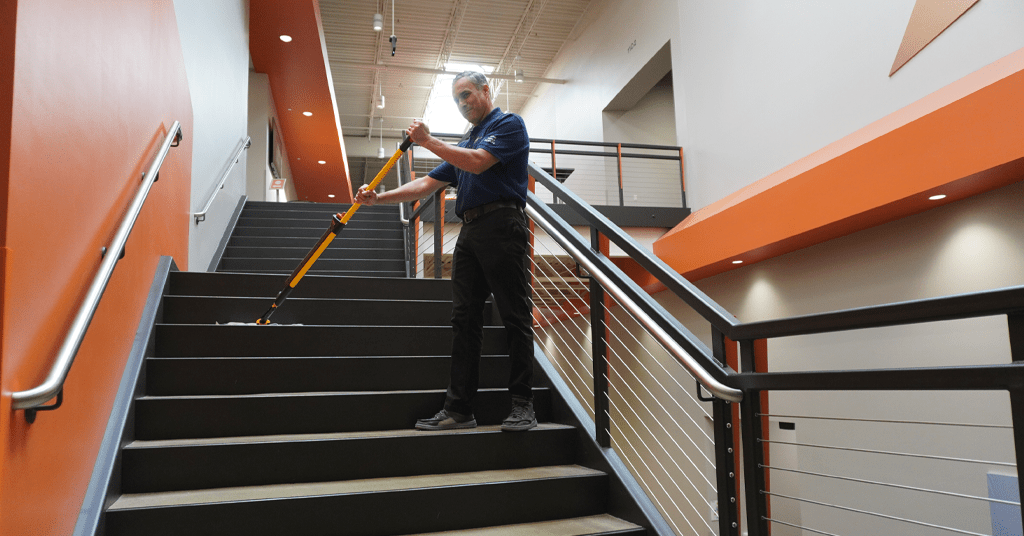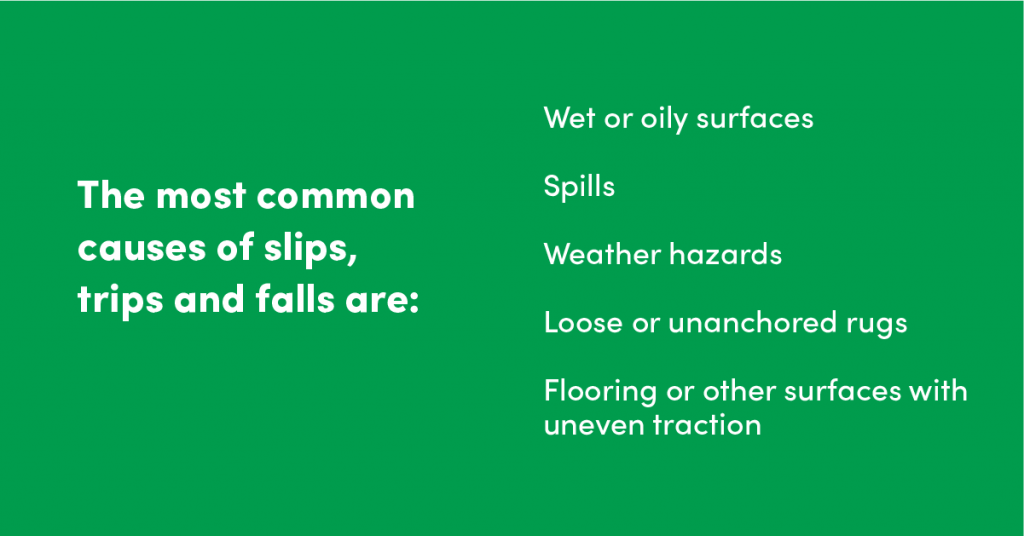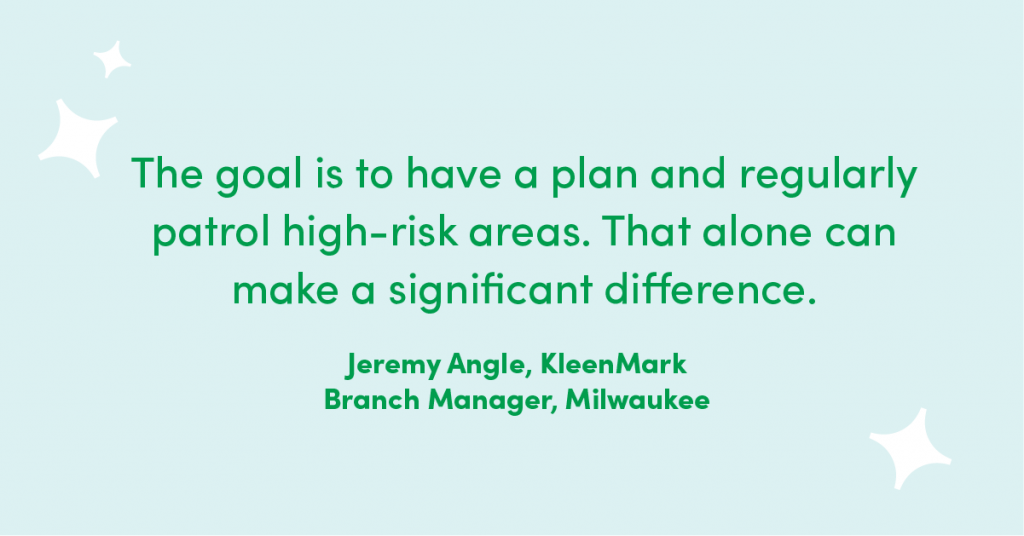
Slips and falls. We’ve all sat through the training (seriously, does it ever change?) and continue to preach prevention. But people keep getting hurt. Turns out proper floor care is a great strategy that can help you potentially reduce that risk.
Over the past five years, an average of 27% of all serious workplace injuries (that’s government language for any injury that’s bad enough to cause you to miss work) were related to slips and falls, according to the Bureau of Labor Statistics. That’s a big number that not only affects productivity but also hits the bottom line.

The most common causes of slips and falls are:
- Wet or oily surfaces
- Spills
- Weather hazards
- Loose or unanchored rugs
- Flooring or other surfaces with uneven traction
Regular cleaning is a great way to address a lot of issues that cause slips, trips and falls. It’s especially important during the day when employees are working. It may sound obvious but that’s when spills occur and people trek in slop. Relying on night cleaning isn’t going to solve any problems for you.
Day Cleaning Focused on Floors
Increasingly, organizations are adding at least one day porter to their cleaning teams. Day porters are well trained in a variety of areas, from high-touchpoint disinfection to spot mopping.
When it comes to floors, day porters will focus on different areas depending on the time of the year and industry. For instance, they’ll plan to target entryways during the winter and increase how often they’re mopping and keeping that area dry. Read, “Office Cleaning Basics: What’s a Day Porter and do I Need One?
For manufacturers, day porters may spend a greater amount of their day walking the lines to check for spills or other problem areas that regularly arise. Lastly, they’ll police restrooms, because wet floors play such a significant role in workplace injuries.

This isn’t the be-all, end-all to prevention but it’s an important aspect. The goal is to have a plan and regularly patrol high-risk areas. That alone can make a significant difference.
Maintain your Matting
High-quality and clean matting is one of the most misunderstood aspects when it comes to proper floor care.
It’s easy to think you have good mats when your cleaning company regularly replaces them. The truth is that those used mats are often cheap and thin. That means that they may look clean but they aren’t good at absorbing water and grime.
Top-performing mats are generally heavier, so the corners don’t curl and the risk of mats sliding is reduced. Additionally, these mats are made with Berber, which makes vacuuming more effective. Longer threads also allow for regular, effective extraction.
Proper matting is huge. Cheap matting has less traction and doesn’t effectively hold as much grime.
Check out “How to Protect Your Office Floor Mats,” if you need more information on proper care.
Deep Clean at Night
This may sound obvious, but scrubbing your floors is vital if your facility has hard surfaces such as concrete or tile.
Regularly run an auto scrubber, paying extra attention to hit high-traffic patterns. Always use a heavy-duty degreaser, especially if you’re working in an industry or plant prone to spills.
When it comes to addressing spills, our teams rely on swing machines or square scrubs, given their ability to push the cleaning pads into the concrete for total coverage.
Doing the entire floor or high-traffic areas each night – that will make a big difference.
Have questions? Send us a note any time at contact@kleenmark.com.
